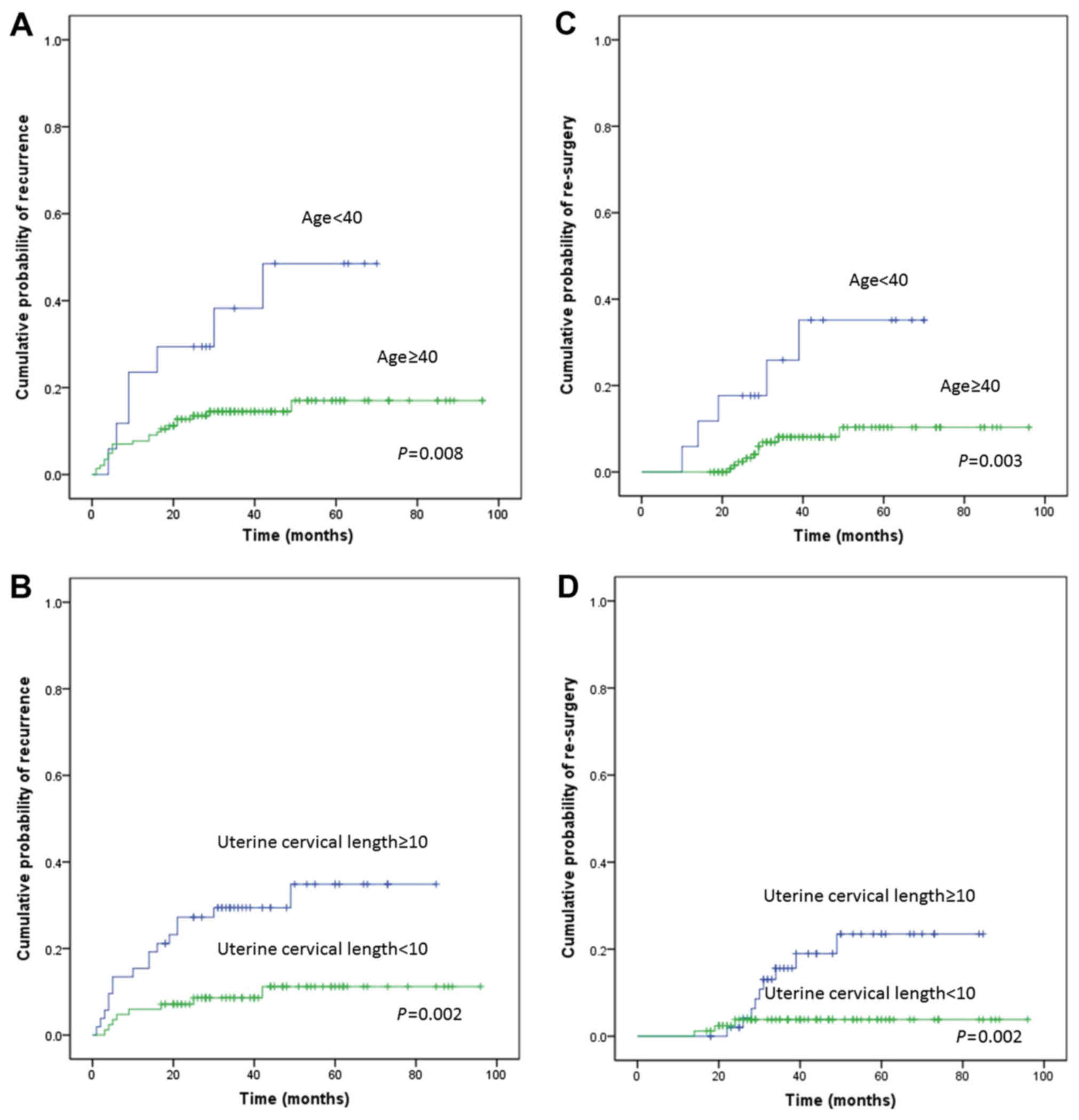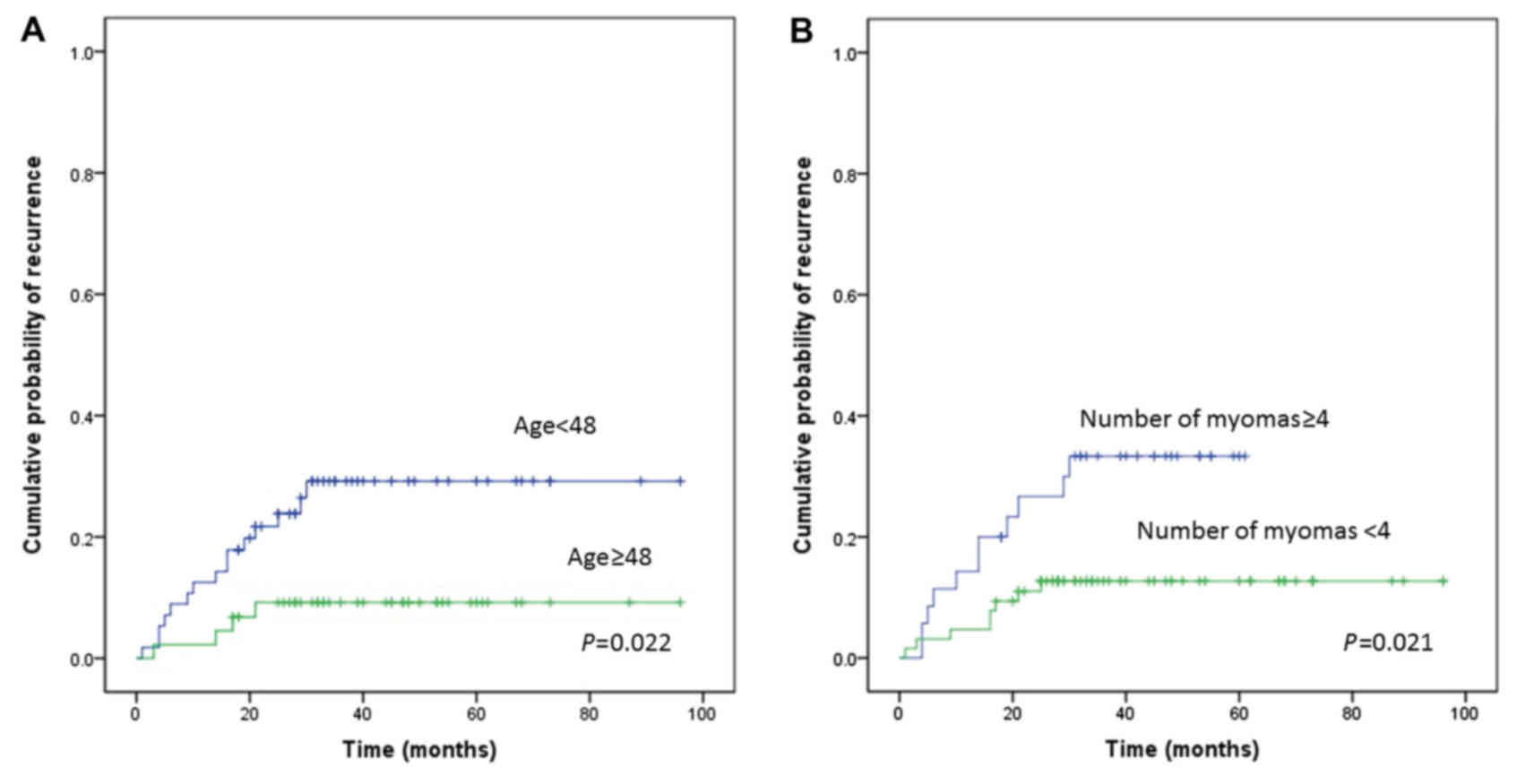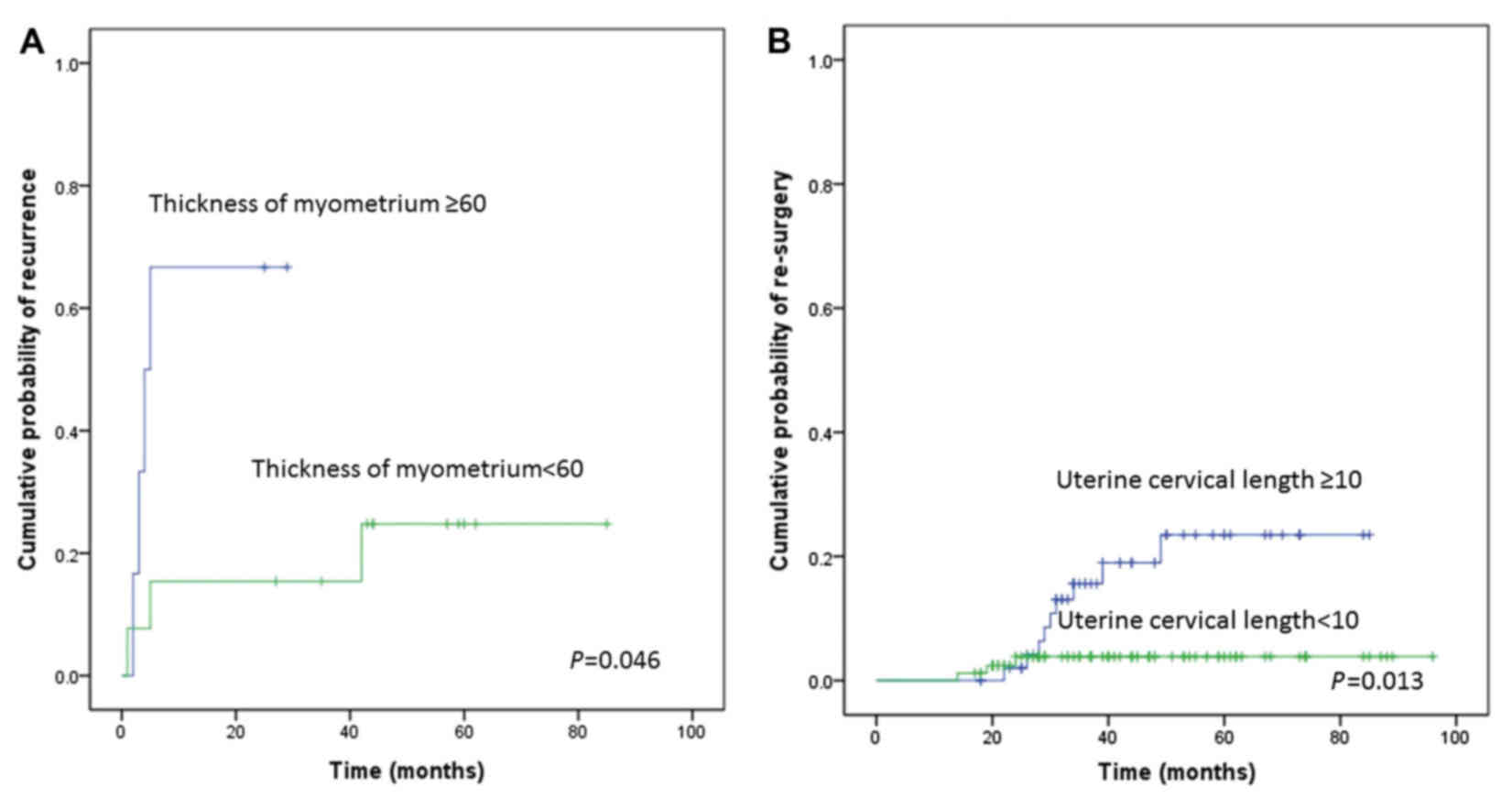|
1
|
Kanaoka Y, Hirai K and Ishiko O: Microwave
endometrial ablation for an enlarged uterus. Arch Gynecol Obstet.
269:30–32. 2003. View Article : Google Scholar : PubMed/NCBI
|
|
2
|
Nakayama K, Ishibashi K, Ishikawa M,
Katagiri A, Katagiri H, Iida K, Nakayama N and Miyazaki K:
Microwave endometrial ablation at a frequency of 2.45 GHz for
menorrhagia: Analysis of treatment results at a single facility. J
Obstet Gynaecol Res. 40:224–229. 2014. View Article : Google Scholar : PubMed/NCBI
|
|
3
|
Overton C, Hargreaves J and Maresh M: A
national survey of the complications of endometrial destruction for
menstrual disorders: The MISTLETOE study. Minimally Invasive
surgical techniques-laser, EndoThermal or Endoresection. Br J
Obstet Gynaecol. 104:1351–1359. 1997. View Article : Google Scholar : PubMed/NCBI
|
|
4
|
Nakayama K, Rahman MT, Rahman M, Ishikawa
M, Yeasmin S, Katagiri A, Iida K, Nakayama N, Aoki S and Miyazaki
K: Microwave endometrial ablation is a highly efficacious way to
emergently control life-threatening uterine hemorrhage. Arch
Gynecol Obstet. 283:1065–1068. 2011. View Article : Google Scholar : PubMed/NCBI
|
|
5
|
Nakayama K, Yeasmin S, Katagiri A, Rahman
MT, Rahman M, Ishikawa M, Iida K, Nakayama N, Aoki S and Miyazaki
K: A comparative study between microwave endometrial ablation and
conventional surgical procedures for treatment of menorrhagia. Clin
Exp Obstet Gynecol. 38:33–37. 2011.PubMed/NCBI
|
|
6
|
Kanaoka Y, Ishikawa N, Asakawa Y and
Nakayama K: Practice guideline of MEA. http://www.alfresa-pharma.co.jp/microtaze/MEAApril
1–2012
|
|
7
|
Akashi Y, Shimizu A and Mizuuchi M: A
survey of outcomes of microwave endometrial ablation for
menorrhagia in our hospital. J Obstet Gynecol (Tokyo). 76:229–233.
2009.(In Japanese).
|
|
8
|
Milligan MP and Etokowo GA: Microwave
endometrial ablation for menorrhagia. J Obstet Gynaecol.
19:496–499. 1999. View Article : Google Scholar : PubMed/NCBI
|
|
9
|
Downes E and O'Donovan P: Microwave
endometrial ablation in the management of menorrhagia: Current
status. Curr Opin Obstet Gynecol. 12:293–296. 2000. View Article : Google Scholar : PubMed/NCBI
|
|
10
|
Cooper KG, Bain C, Lawrie L and Parkin DE:
A randomized comparison of microwave endometrial ablation with
transcervical resection of the endometrium; follow up at a minimum
of five years. BJOG. 112:470–475. 2005. View Article : Google Scholar : PubMed/NCBI
|
|
11
|
Flake GP, Anderson J and Dixon D: Etiology
and pathogenesis of uterine leiomyomas: A review. Environ Health
Perspect. 111:1037–1054. 2003. View
Article : Google Scholar : PubMed/NCBI
|
|
12
|
Sato F, Mori M, Nishi M, Kudo R and Miyake
H: Familial aggregation of uterine myomas in Japanese women. J
Epidemiol. 12:249–253. 2002. View Article : Google Scholar : PubMed/NCBI
|
|
13
|
Faerstein E, Szklo M and Rosenshein N:
Risk factors for uterine leiomyoma: A practice-based case-control
study. I. African-American heritage, reproductive history, body
size, and smoking. Am J Epidemiol. 153:1–10. 2001. View Article : Google Scholar : PubMed/NCBI
|
|
14
|
Shifren JL and Schiff I: MenopauseBerek
& Novak's gynecology. Berek JS, Rinehart RD and Hengst TC: 14th
edition. Lippincott Williams & Wilkins; Philadelphia, PA:
c2007
|
|
15
|
Peddada SD, Laughlin SK, Miner K, Guyon
JP, Haneke K, Vahdat HL, Semelka RC, Kowalik A, Armao D, Davis B
and Baird DD: Growth of uterine leiomyomata among premenopausal
black and white women. Proc Natl Acad Sci USA. 105:pp. 19887–19892.
2008, View Article : Google Scholar : PubMed/NCBI
|
|
16
|
Fedele L, Parazzini F, Luchini L,
Mezzopane R, Tozzi L and Villa L: Recurrence of fibroids after
myomectomy: A transvaginal ultrasonographic study. Hum Reprod.
10:1795–1796. 1995. View Article : Google Scholar : PubMed/NCBI
|
|
17
|
Hanafi M: Predictors of leiomyoma
recurrence after myomectomy. Obstet Gynecol. 105:877–881. 2005.
View Article : Google Scholar : PubMed/NCBI
|
|
18
|
Jacobson GF, Shaber RE, Armstrong MA and
Hung YY: Changes in rates of hysterectomy and uterine conserving
procedures for treatment of uterine leiomyoma. Am J Obstet Gynecol.
196:601.e1–6. 2007. View Article : Google Scholar
|
|
19
|
Nishiyama S, Saito M, Sato K, Kurishita M,
Itasaka T and Shioda K: High recurrence rate of uterine fibroids on
transvaginal ultrasound after abdominal myomectomy in Japanese
women. Gynecol Obstet Invest. 61:155–159. 2006. View Article : Google Scholar : PubMed/NCBI
|
|
20
|
Yoo EH, Lee PI, Huh CY, Kim DH, Lee BS,
Lee JK and Kim D: Predictors of leiomyoma recurrence after
laparoscopic myomectomy. J Minim Invasive Gynecol. 14:690–697.
2007. View Article : Google Scholar : PubMed/NCBI
|
|
21
|
Nakamura K, Nakayama K, Ishikawa M,
Katagiri H, Katagiri A, Ishibashi T, Sato E, Asakawa Y and Kyo S:
Efficacy of multiple microwave endometrial ablation technique for
menorrhagia resulting from adenomyosis. J Obstet Gynaecol Res.
41:1769–1172. 2015. View Article : Google Scholar : PubMed/NCBI
|













